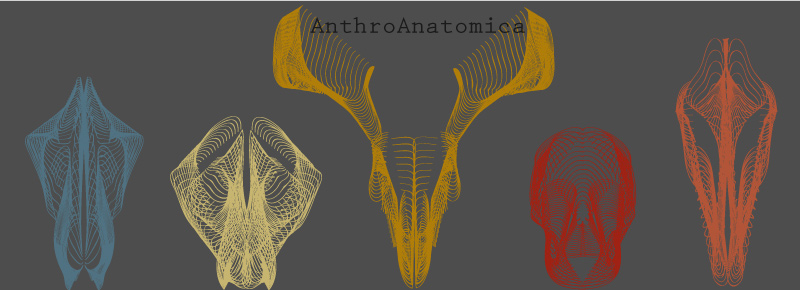Comparison of axial skeletons of a human and canine, arrows note the number and directions of each spinal curve. (Not to scale).
The spines of each system are therefore adapted to cope with each of these extremes. The S-shape spine of a biped has 4 notable curves, creating it's distinctive S shape. This maintains the centre of gravity when standing from the top of the spine down through the feet. These curves also facilitate weight transference with minimal effort.
The C-shape spine of quadrupeds have only 3 notable curves that are near opposite to biped curves. The C-shape comes from the thoracic and lumbar regions curving upwards. I've drawn the canine above stood upright, this would bring it's centre of gravity in front of its feet, causing it to be unbalanced and fall forward. The curvature of its spine, particularly at the lumbar region would not support the weight of an upright torso, the curve is in the wrong direction.
This shows that we simply can't start our anthropomorphic characters by just standing a quadruped up on 2 feet. This and other anatomical issues make this a poor starting point, however, should we wish to maintain a degree of our chosen animals features in our anthropomorphic bipeds we can start adapting this anatomy into likely possibles. Lets explore these possibilities...

